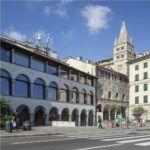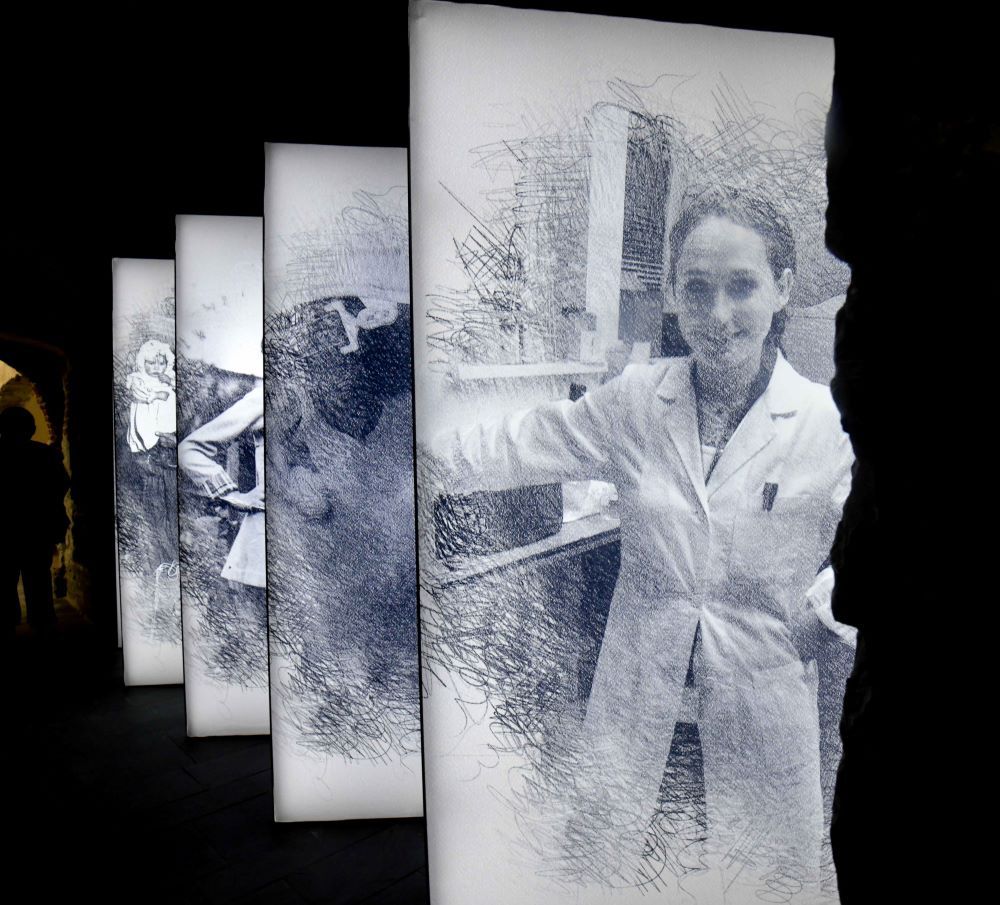MEI: National Museum of Italian Emigration

MEI: The National Museum of Italian Emigration is located at the Commenda di San Giovanni di Prè, in the heart of Genoa.
Housed within the Commenda di San Giovanni di Prè, the new MEI – National Museum of Italian Emigration spans three floors divided into 16 areas where visitors can explore the many stories of Italian migrations, from the time of Italian Unification (and even earlier) to the present day.
Connected, both administratively and geographically, with the Muma, the Museum of the Sea, which is also very nearby, the new center traces the history of emigration through documents, audiovisual materials, and works of art. Emigration is central to Genoa’s own history, as the city has a strong connection to emigration: millions of Italians departed from here for the Americas, Africa, Asia, and Australia.
Here, men and women arrived from all over Italy, leaving behind everything—work, home, loved ones—for a one-way journey. The stories of migrants’ lives are narrated through primary sources such as autobiographies, diaries, letters, photographs, and newspapers.
The museum
The choice of Liguria, and specifically Genoa, among the various cities and regions that applied to host this important museum, was driven by the role that this city and its port have played in the history of Italian emigration. Moreover, the choice of location, the iconic Commenda di San Giovanni di Prè, a 12th-century building, is also rich in meaning: it has been a place of welcome and a transit point for humanity throughout the centuries, from pilgrims and Crusaders to 19th-century emigrants.
The exhibition path spans three floors divided into 16 areas, centered around the life stories of the emigration’s protagonists. Visitors can explore individual experiences through primary sources such as autobiographies, diaries, letters, photographs, newspapers, songs, and music that accompanied the emigrants.

The history of migrants around the world
Documents merge into a single narrative, showcasing the migration phenomenon in its many facets and complexities. A museum in motion, as suggested by the theme of travel. Visitors will embark on a journey through the images and stories of the millions of Italians who left our country. Migrants from different eras ranging from the time of Italian Unification to the present each with their own story, people who faced the difficult decision to leave behind their work, home, and family.
Data on departures, returns, destinations, work, health, nutrition, racism, reception, and the many diverse reasons for leaving Italy, which form the vast mosaic of migration, will be presented to visitors through interactive and multimedia tools. Each area of the museum introduces a period of human mobility, from prehistory to the medieval and modern ages, long before the concept of “border” emerged.
Italian emigration did not only have its destinations abroad and does not belong solely to the past. The museum also features a space for reflection, the Memorial, an artistic installation with a world map highlighting locations of tragedies involving emigration: from the sinking of the Sirio to the Triangle Shirtwaist Factory fire in New York, from the events in Aigues Mortes to the Marcinelle disaster, including mining disasters and shipwrecks. These names, which must not be forgotten, represent the dark, tragic side of migration, as the silent tragedies affecting migrants around the world remind us today.

MEI in numbers
Spaces and Technologies
– 16 rooms
– 70 multimedia stations
– 65 monitors
– 25 Panasonic laser projectors
Contents
– Over 200 emigration stories
– Over 1300 archival images
Activities
– Over 5,000 hours of work, including design, production, and setup
– Over 50 professionals involved
– Approximately 60 actors, with a special appearance by Massimo Olcese
– Over 20 professionals dedicated to filming and editing (direction, production, operators, casting direction, costumes, makeup, cinematography, production secretary, photography)
Accessibility
The exhibition path extends across two floors connected by an elevator accessible to manual wheelchairs, one of which is provided by the museum. The structure is accessible to wheelchair users. Visitors can reach the MEI from Via Gramsci by descending a short slope leading to the portico. Any steps are navigable via ramps. In front of the Commenda, on the road side heading east, there are three reserved parking spaces for disabled visitors.
https://www.museidigenova.it/en/mei-museum-italian-emigration



